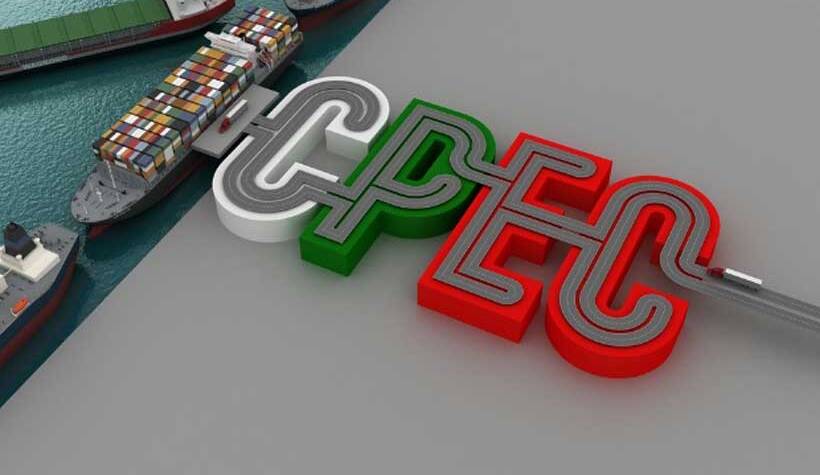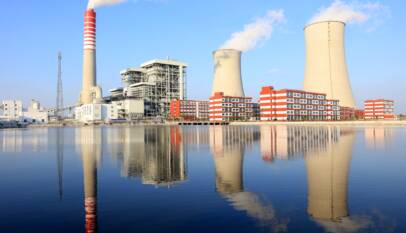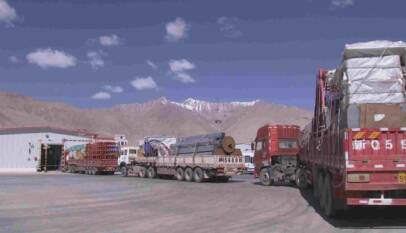Belt and Road Initiative marks global economic shift with 150 countries and 30 organizations onboard
Amna Ejaz Rafi, a Research Associate at Islamabad Policy Research Institute, highlights the global impact of the Belt and Road Initiative (BRI), emphasizing its role in reshaping production chains, trading links, and fostering economic cooperation. With 150 countries and 30 international organizations participating in BRI, economic interests are becoming central to future alliances. Rafi discusses the significance of the China-Pakistan Economic Corridor (CPEC), a flagship project of BRI, in driving socio-economic development in Pakistan. Despite regional opposition, particularly from India, Rafi stresses the importance of countering adversarial tendencies to capitalize on the economic dividends of connectivity, calling for political stability domestically and enhanced regional ties, especially with countries like Bangladesh, Central Asian states, and ASEAN, to ensure the success of CPEC and foster regional economic integration.
The Belt and Road Initiative (BRI) envisions building of infrastructure, reshaping of production chains and trading links. So far, 150 countries and 30 international organisations have joined BRI, signaling the project’s global outreach. With BRI’s growth, one thing is apparent that economic cooperation is the new trend and future alliances will be governed by economic interests. BRI’s economic scope on the one hand offers opportunities for the world players, in particular the developing countries, to engage economically and on the other, economic connectivity is perceived as a challenge by status-quo powers. This perception is primarily linked to China’s strategic gains. During the period 2013-2022, China’s total imports and exports with countries involved in BRI reached $19.1 trillion while two-way trade investment between China and other countries involved in BRI totaled $380 billion. China’s economic engagements with other countries and regions will heighten the East Asian power’s global stature.
China-Pakistan Economic Corridor (CPEC) is the flagship project of BRI. In the words of President Xi Jinping: “CPEC is located where the Silk Road Economic Belt and the 21st Century Maritime Silk Road meet.” CPEC has ushered an era of socio-economic development for Pakistan. The energy projects and industrial growth will boost Pakistan’s economy. The building of roads will facilitate transportation which, in turn, will open up business avenues. Enhanced connectivity will also link the backward areas with urban centres. On the regional front, the development of Gwadar seaport will make Pakistan a trading hub, as all trade to and from Central Asia is going to adopt the shortest route via Gwadar.
CPEC faces opposition from certain regional quarters. India has raised objections to the corridor for passing through Gilgit-Baltistan. India has been trying to downplay CPEC. The India-funded construction of the road network linking Zaranj border crossing between Afghanistan and Iran is aimed at creating a link between Chabahar seaport and Central Asia. India’s opposition to CPEC is also because of China’s role in region. The China-India relations reached a low point over the border dispute. India by participating in the India-Middle East-Europe Economic Corridor (IMEC) launched during G-20 Summit 2023 has adopted a varied path towards trade connectivity. IMEC is a westward oriented route. India’s inclusion in the corridor is reflective of its alliance towards the Western hemisphere. The corridor will provide India with opportunity to secure trading ties with Middle East and Europe.
Seeing South Asia and the prospects of regional connectivity, the ground facts offer both scope and challenges. The building of seaports and economic connectivity are positive developments towards regionalism. Contrarily, the conflictual regional approaches, when it comes to countering extremism and militancy, weaken the scope of economic integration. India’s objection to CPEC and its sabotage tactics are a threat to regional peace and progress. Pakistan is part of CPEC, and the corridor is essential for the country’s economic progress. However, to capitalise on the economic dividends of connectivity, Pakistan will have to counter the adversarial tendencies, both at home and aboard. Domestically, political stability is a must for economic growth. Regionally, Pakistan needs to enhance ties with Bangladesh. Gwadar and Chittagong seaports can be the lead in regional connectivity. Relations with Central Asian states are important for CPEC’s projection into Central Asia. Afghanistan is a foreign policy challenge and for that Pakistan needs to employ a regional channel. SCO having membership of all important regional stakeholders can be a platform towards a regional approach to Afghan stability. On account of Pakistan’s ‘Vision East Asia’ policy, with CPEC the focus is on economic integration. The corridor between Kashgar and Gwadar will open up prospects of trading ties between the two regions. Thus, Pakistan needs to enhance economic ties with ASEAN.
Experts say Pakistan needs stable policies to fully utilize China’s expertise in clean energy and industrial development
Pakistan’s energy sector investments are on a complex trajectory. Despite government effor…









